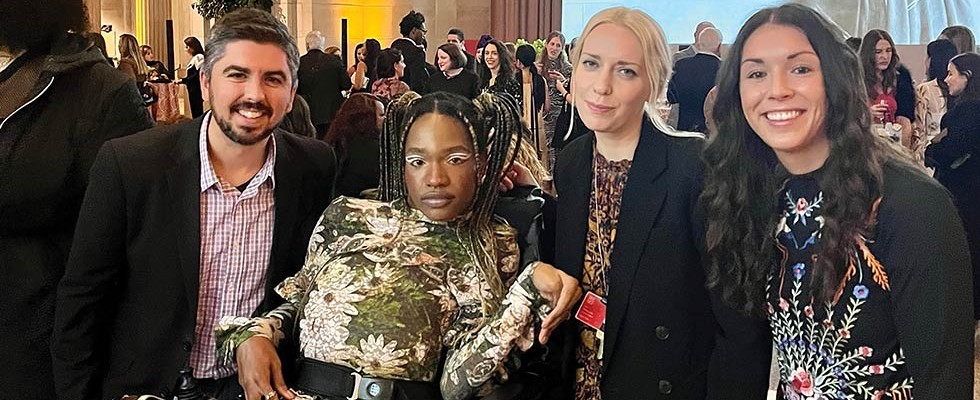
Quantum Rehab, a provider of complex power wheelchairs, played a small but historic part in an exhibition celebrating female fashion designers at the Metropolitan Museum of Art’s (The Met) Costume Institute in New York City.
The exhibition, titled “Women Dressing Women,” highlights the creative and artistic legacy of more than 70 womenswear designers from The Met’s permanent collection, spanning from the turn of the 20th century to the present day. The exhibition debuted recently and held its opening reception on Dec. 4. The show is open at the Met Fifth Avenue until March 3.
Among the many designs is a bodysuit by Hillary Taymour that Aaron Rose Philip modeled on the runway. Philip has cerebral palsy and uses a Quantum Edge 3 power wheelchair with iLevel.
Working with representatives from the Costume Institute in anticipation of the exhibition, Quantum manufactured and loaned an Edge 3 powerchair that matched the exact specifications of Philip’s chair.
Philip helped design her mannequin in collaboration with the museum and the mannequin company Window France. The display represents a milestone for The Met.
“I think it’s incredibly significant and important to be able to present fashion in this way,” said Mellissa Huber, associate curator of the Costume Institute. “We’ve never represented disability in this manner or included a wheelchair in any of our prior exhibitions. I hope that when visitors come through the galleries and they see that type of representation, and they see creativity and beauty being linked with diversity, that they’ll be inspired and that it will really illuminate the point for them that fashion is for everyone.”
Mary Cabarle, manager of clinical education and marketing liaison for Quantum, assisted the Costume Institute with the delivery, operation and arrangement of the power wheelchair.
“What an honor it has been to be able to contribute to the Women Dressing Women exhibition,” Cabarle said. “The team at the Met has been so committed to making the power wheelchair as close to Aaron Rose’s as possible. Quantum was thrilled to have been able to be part of this!”
“Aaron Rose said it best herself: ‘I used to come to The Met and now I’m being featured in an exhibit and see someone that looks like me.’ The representation of power mobility in such a prestigious museum as The Met helps to increase visibility for those who use power mobility,” Cabarle continued.
“We are very excited and appreciative to be contacted by The Met to be part of their exhibition, and even more so that they wanted to display a Quantum power chair at the exhibition,” said Jay Brislin, vice president, Quantum Rehab. “An event such as this helps continue to highlight how mobility products can provide functional independence to individuals to help them accomplish any of the goals they have in their lives."




